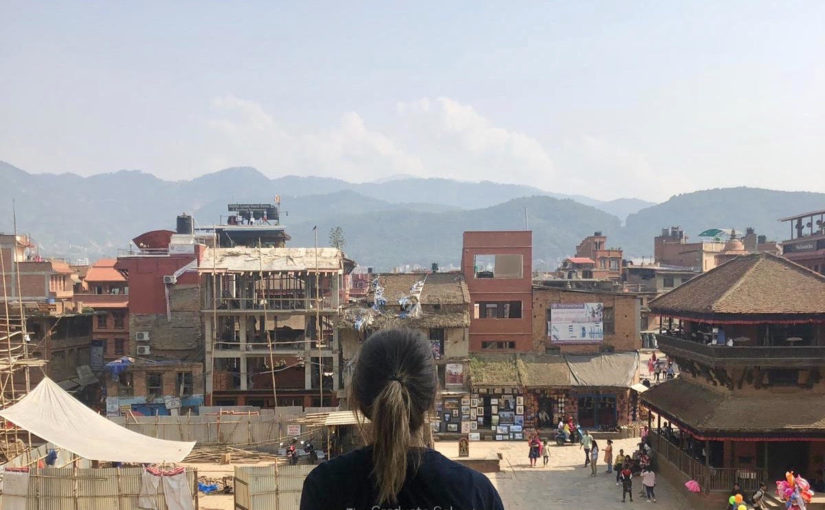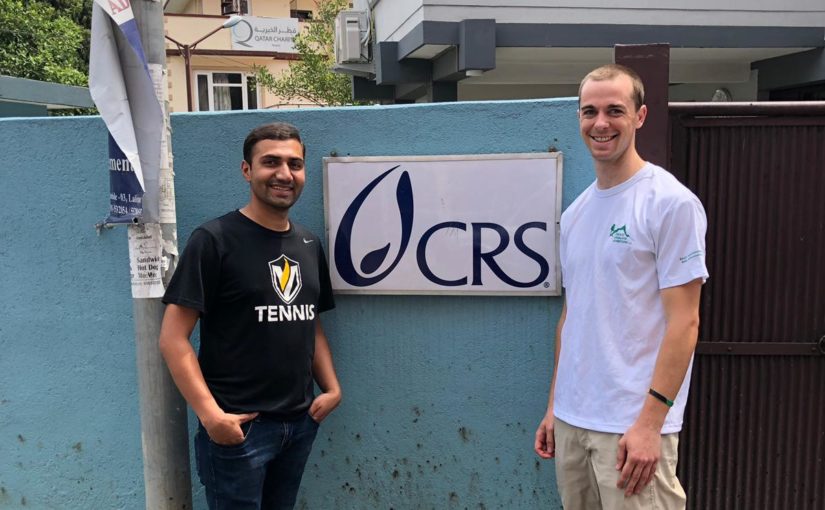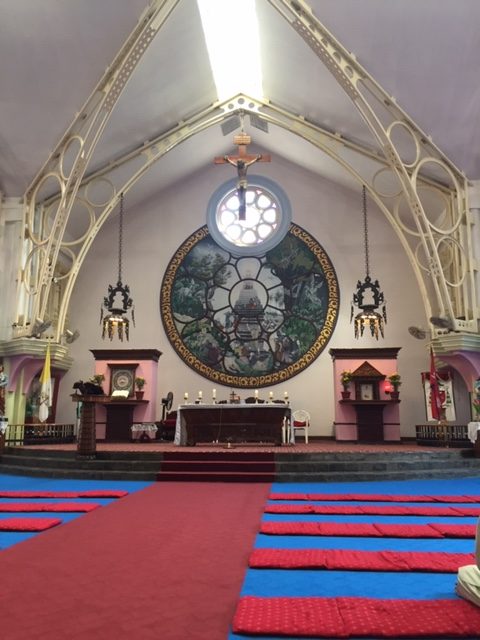On any other May 25—Argentina’s May Revolution celebration—you would find me at my parents’ house, sitting by the fireplace and eating traditional Argentine food. But this year was different. Landing in Kathmandu, Nepal for the first time, I took one step outside the plane and was already sweating. I lowered the window in my taxi, hoping for fresh air and a view on the way to my new apartment, but car tailpipes smoked like a chimney and clouds of dust obscured the mountains. Many people wore face masks, and several buildings were still under reconstruction after the monstrous 2015 earthquake. In a city with no traffic lights but plenty of cows and motorbikes, my mind was jostled by frequent sudden stops and punctuated by the sound of vehicle horns.


Warm, chaotic and notoriously polluted was my first impression of Kathmandu, but nothing could dampen the excitement of beginning my Integration Lab summer research. In partnership with Catholic Relief Services (CRS), my teammate Brian and I were to visit communities in Nepal and India to better understand how we might encourage disaster-affected populations to adopt hazard-resilient housing reconstruction practices. CRS aims to promote human development by responding to major crises. The organization seeks to expand culturally appropriate housing that meets international standards and enables future upgrades to permanent shelter.
Learning from chaos
As the days went by, I started to enjoy the chaos. Every day I set foot outside, my body and mind filled with energy. I was delighted by the colors, the smell of incense in the streets, the mixture of religions, the countless temples and, mainly, the people. Despite their meager resources, every house welcomed us with a smile and offered tea and food. Our attempts to speak local words brought curious smiles as well.


Though every day I’d learned something different, there was one thing that stood out: the dynamic inside the communities. Every time we visited a house, at least one neighbor was already there having tea or talking to the house owner. A simple household survey would sometimes turn into a focus group with neighbors joining to help answer the questions. Many of these people also work together under a labor exchange (parma) system cultivating crops. Yet, astonishingly, they don’t usually help each other to build safer houses. At least in Nepal, some communities used to work together to (re)build traditional houses before the earthquake, but haven’t done so since.
Filling gaps and thinking forward
I started to ask why such close communities no longer exchange labor for house reconstruction. Some said they were struggling to repair their own houses and were not able to care for neighbors’ houses, but others said that once a household obtains a government grant to build a safer (usually brick) house, the community won’t help. Community members assume that someone with a grant doesn’t need the community’s help.
How is it that the grant scheme prevents people from helping each other to build safer houses if they used to work together for traditional ones? This was a living example of the unintended consequences of development work we discussed in one of our Master of Global Affairs classes at the Keough School.

Revising the grant program to address this issue would require larger players to exert influence, but development workers can help fill this gap by promoting community resilience. Community resilience not only helps families save time and money (the few communities that did work exchange for house reconstruction saved up to 50 percent of labor costs), it also can help them heal and move forward after a traumatic event. Promoting community resilience might not be an easy task, but it’s one that’s worth trying, especially in an environment where community members are already close to each other. How do we do this? I don’t have the answer.
One last important lesson I learned from the field is that people are happy to share their views and experiences. All we need to do is listen carefully. Before we try to change their behavior, we need to listen to understand what motivates them, what they fear, whom they trust, and what they stand for. Their fears, needs, and incentives are usually rooted in something real and shaped by the larger environment. Policies don’t take place in a bubble, and behaviors are not changed by simply suggesting “universal” best practices. The development world needs to listen to and work with communities to face the challenges ahead.







